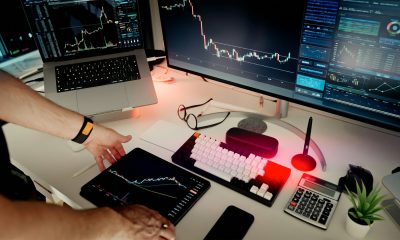Featured
How to harness the power of the ‘Second Wave Cycle’
The Second Wave Cycle shows you where you can gain the most profit while others are looking away.

You understand how powerful cycles can be at predicting market moves ahead of time. Here at Dent Research, we’ve used them to help predict almost every major market move of the last 30 years.
For example, using the power of cycles we called:
The U.S. recession of 1990-1991;
The following bull market from 1994-2000;
The top in internet stocks at the height of the Nasdaq bubble;
The bull market of the 2000s and the top in stocks in 2007 thirteen years in advance;
The bottom in stocks in 2009 to the day;
And many more…
That’s why you read our work (and for that we thank you).
Well, I have developed a way to harness one of those cycles – the Second Wave Cycle – in a new way. The Second Wave Cycle can help you get into some of the market’s hottest profit trends when others are looking away… and when prices are dirt cheap. It’s a way to invest without getting burned by the hype, which happens all too often.
In fact, if you’ve followed my work over the years, you’ll know I’m not one to make exaggerated profit claims. I hate the hype that pollutes our industry as much as you do.
That’s why I like the Second Wave Cycle. It actually helps us improve our investment success by working against the hype. I saw how it could have helped investors maximize their gains in many hype-driven booms since the 1980s. I’m talking biotech stocks in the ‘80s, dotcom stocks in the ‘90s, housing in the 2000s, the FAANG stocks in the 2010s, and many more in between.
For example, during the biotech boom of the ‘80s, it could have helped investors buy some of the best stocks in the industry when they were near all-time lows. Like Amgen here:
A $5,000 stake in this play could have turned into $94,050.
A $3,000 stake in Gilead could have ballooned into $130,200.
A $2,500 stake in Biogen into half a million dollars.
I’m not claiming that investors would have held long enough to realize those incredible gains. I’m simply pointing out that waiting for the first big hype cycle to pass, and then buying into incredible growth industries at lower prices, can be incredibly rewarding.
The potential here is abundantly clear. And the timing couldn’t be better.
Market conditions are perfect to monetize the Second Wave Cycle
You’ve probably noticed that there’s been an increasing number of hype-driven booms over the last few years. I’m talking about events where certain assets have climbed to sky-high valuations after they’ve been hyped by investors and the media.
There’s been the crazy run-up in FAANG stocks, 3D printing, Bitcoin, big data, the internet of things, IPOs… and many more. In fact, these kinds of events are happening with increasing frequency… representing a great opportunity to make lots of money, if you’re savvy.
But many people trying to invest in growth industries actually lose money. They get in at the top… and catch all of the inevitable downside when the trend runs out of gas.
That’s why the Second Wave Cycle is so important right now. It’s a way to take advantage of these “hype-driven” markets— not by piling in at the top with the rest of the market, but by buying in low when most investors look the other way.
And this is what I intend to help you do in the latest, hottest investing trend of the year (and it’s not the IPO mania underway)… potentially turning a modest stake into an incredible sum—up to $223,500.
(Featured image by DepositPhotos)
—
DISCLAIMER: This article expresses my own ideas and opinions. Any information I have shared are from sources that I believe to be reliable and accurate. I did not receive any financial compensation for writing this post, nor do I own any shares in any company I’ve mentioned. I encourage any reader to do their own diligent research first before making any investment decisions.

-

 Africa7 days ago
Africa7 days agoMorocco Allocates 1.3 Billion Dirhams to Boost Startup Ecosystem Under Digital 2030 Strategy
-

 Crowdfunding2 weeks ago
Crowdfunding2 weeks agoStar Citizen Funding Soars as 2025 Becomes Its Most Successful Year Yet
-

 Crypto4 days ago
Crypto4 days agoAAVE Community Challenges Aave Labs Over Governance and Control
-

 Crypto2 weeks ago
Crypto2 weeks agoCrypto ETF Inflows Signal Renewed Market Confidence

























